






June Edition: May 24, 2024
July Edition: June 21, 2024
August Edition: July 26, 2024
September Edition: August 23, 2024
October Edition: September 20, 2024
November Edition: October 25, 2024
December Edition: November 22, 2024
February Edition: January 25, 2025
March Edition: February 21, 2025
April Edition: March 22, 2025
May Edition: April 25, 2025
June Edition: May 23, 2025
SEE PAGE 7 FOR ADVERTISING and EDITORIAL CONTACT DETAILS



Finley and district grain growers excelled at the recent Sydney Royal Easter Show.
Locals from Finley, Berrigan and Deniliquin had their grain samples collected, cleaned and presented to the 2024 show judges.
From the four main districts covering NSW - southern, central, western and northern - there were 41 different categories of winter and summer crops presented.
Locals achieved fabulous results across several crop types.
Trudy and Chris Fanning from Deniliquin claimed the Champion Oilseed of the Show with their Trophy canola.
GJ and PA Parr from Berrigan presented an outstanding crop of Sceptre wheat that achieved Reserve Champion Hard Wheat of the show.
Michael Hawkins from Finley exhibited Opus rice that achieved first place in that category.
I would like to acknowledge Arthur Dempster from Dempster Seed Grading Berrigan for his efforts in collecting many outstanding seed samples on my behalf.
Thank you to all the participants in this 2024 Royal Easter Show. I encourage further participation from farmers for next year’s show. Congratulations to all exhibitors.
~ Contributed by Rodney Kerr, a Royal Agricultural Shows grain collector.
 Leesa Muir
Leesa Muir
 MANAGER AND ADVERTISING Rebecca Flisher
MANAGER AND ADVERTISING Rebecca Flisher
 Zoe McMaugh
MANAGER
Zoe McMaugh
MANAGER
 MANAGER
MANAGER

When Jason O’Loghlin set out breeding Wiltshire Horns in 2002 he made himself a promise that only the best would do.
Thatcredence has set him up for success as a producer, and in the showing circuit.
The Deniliquin-based breeder went to the Sydney Royal Easter Show in April with a mostly new team of sheep, and swept the field. The Wiltshire Horn was the feature breed of the show, and his OLoghlin Wiltshire Horn Stud claimed Grand Champion Wiltshire Horn Ram, Grand Champion Wiltshire Horn Ewe and Most Successful Wiltshire Horn Exhibitor. Jason said it’s just the latest in a run of major successes.
“I’ve won just about every major show in the country,” he said.
“Sydney comes after winning the grand champion at the Bendigo Sheep & Wool Show last July, the Royal


Melbourne Show in September and the 2023 Australian Wilshire Horn Sheepbreeders Association show in Bendigo.
“In most categories at both shows I have placed first and second.
“And I got similar results in Sydney, even though all but one of the sheep I took with me is new to the (showing) team.”
Jason said the success comes down to being meticulous, and not accepting anything less than the standard he’s produced in the past.
“We’re 13 years in now on muscle and data collection, and we’re leading the pack in that data,” Jason said.
“I can be my own worst enemy at times because when I do a structural assessment if it’s not up to scratch it goes.
“Some people might say I’m a bit too harsh, but it pays off in the end.”
Big framed, lean, well muscled and generally later maturing, the Wiltshire Horn is a horned shedding breed of meat sheep. Its purpose is to produce progeny for optimal prime lamb production, often with lambs more suited to export specifications.
Both rams and ewes are proud and stately with a certain grandeur of carriage. Rams generally average over 100kg, and ewes over 80kg.
Jason started his Wiltshire Horn journey in 2002 with just six sheep. By 2009 he had established the Ologhlin Wiltshire Horn Stud on Moonee Swamp Rd,
Deniliquin. Today he has about 400 sheep, but he said that can fluctuate with the seasons.
“I would like to expand more, but in the current climate what we have now is a sustainable number,” he said.
“These days, with the low wool prices and the input costs of wool sheep, the option of a shedding sheep breed is more attractive.
“Having a breed that is very worm resistant is also a big advantage.
“With the timeline and data we have put together (at Ologhlin Stud) and the traits we have selected, we’re moving in a very positive direction.”
Ologhlin Stud is a family operation, with only the family involved in the day-to-day running of the flock and farm. Jason is aided by his partner Kristy Tanner and sons Justin, 9, and Henry, 6, who also form part of his show team when available.
Justin attended his first Melbourne Show as part of the show team at the age of four. But Sydney this year was a solo excursion for Jason, with school and the boys’ competitive swimming commitments preventing them from joining him.
Ologhlin Stud will now take a brief break from showing, now his ewes are all joined. He will be back in action for the 2024 Bendigo Sheep & Wool Show in July. Melbourne in September and the Wilshire association show in October are also on the calendar for the stud again this year.

A Tocumwal maize grower has smashed the Australian yield record, producing a crop which has delivered 23.27 tonne per hectare.
Grown on the property of Pate Agricultural Pty Ltd, the new record beats the 21.47 t/ha set in 2022. Nathan Pate planted 100 hectares of Pioneer Hybrid P0937 on October 18. The crop was harvested in late March, and news of the record was delivered in mid-April.
The crop was grown using a pivoting lateral with 6.5 megalitres of water per hectare supplied throughout the summer. This resulted in a water use efficiency (WUE) of 2.74 tonnes per megalitre of water when rainfall was factored.
The crop was sown following a 16 month fallow. The fertility of the paddock was very good with a deep nitrogen soil test confirming 212kg per hectare of soil nitrogen (0-60cm soil). A recent soil test measured a satisfactory soil pH of 5.7CaCl2, along with healthy 60mg/kg Phosphorus (Colwell) in 0-20cm of topsoil. The field has had a history of robust inputs, along with soil amendments such as lime, gypsum and chicken litter.
“Ground cover is king.”
NATHAN PATE
Maize and canola have been two of the mainstay crop choices on the property over the last five years. The previous corn residue was maintained from the 2021/22 summer. Mr Pate has observed this to be a critical step to improving soil water infiltration after recent study tours in Texas.
“Ground cover is king,” he said.
James Murray from AGnVET Cobram, who advised Mr Pate and his farm manager Daniel Phelan throughout the season, said strip tilling commenced on September 28, 2023, in which 70kg per hectare of phosphorus and 148kg per hectare of nitrogen was banded at a depth of about 200mm.

“Strip tilling in such a critical step to high yield,” Mr Murray said.
“It’s our best chance to supply bulk nutrition in the planting row and prepare the seed bed for planting.
“The best crops start with the best preparation.”
The Pioneer Hybrid P0937 was sown at a rate of 96,000 seeds per hectare on 30 inch (76.2cm) spacings, and emerged uniformly.
“The actual field population was measured using precision planting pogo device (electronic tape measure) and 94,000 plants per meters square was achieved, along with a singulation of 97 per cent,” Mr Murray said.
A further 125kg per hectare of nitrogen and 40kg per hectare of sulphur was broadcast on October 2, 2023 ahead of forecast rain (Urea/SOA blend).
“80mm of rainfall fell on October 4 to fully charge the soil profile with moisture,” Mr Murray said.
“It took a further two weeks for the field to get too the correct soil temperature for planting to occur.
 The crop.
The crop.

“The P0937 - an elite 109 CRM feed grain maize hybrid - was planted on October 18 along with 40 litres per hectare of Corn Popup Starter fertiliser in row.
“An additional application of urea - 69 kg per hectare of nitrogen - was broadcast on November 23 ahead of rainfall to target the V5 growth stage of the crop.
“This appears to be a key timing for influencing cob girth.
“The willingness of Nathan’s manager, Daniel Phelan, to go the extra mile with this impressive crop was evident when he co-ordinated a final nitrogen application on New Year’s Day, when many others would have been down the river fishing or skiing!
“A final nitrogen application of 46kg per hectare was broadcast by aerial application on January 1.
“Therefore a total of 388kg per hectare of nitrogen was applied for the season, along with 70kg per hectare of phosphorus and 40kg per hectare of sulphur.”
Weeds and establishment pests were well managed with a post sowing pre-emergent mix of Paraquat 250 at 2.5L/ha, Dual Gold at 1.5L/ha, Gesaprim 900 at 2kg/ha and Chlorpyrifos 500 at 1L/ha. The field was mid row ripped with a Gessner Centre Buster to prevent some early signs of soil water infiltration problems.
“The soil surface seems to seal up and repel applied irrigation water, and trial and error has proven this to be a worthwhile temporary fix,” Mr Phelan explained.
Soil moisture probes were sourced through Brett Orwin at Schedule-IT in Finley.
“This was an excellent tool for pro-active irrigation scheduling so that crop stress during the growing season was not a factor,” Mr Murray said.
“Nathan and Daniel found that this technology was useful to reassure their own gut feelings regarding when and how much to water.”
Mr Murray monitored the crop during the season and provided agronomic advice. He said heliothis were treated twice during the season. The first insecticide application occurred approximately mid-December.
“A targeted application of Vantacor was applied along with a foliar shot of Boron at the V7/8 stage of the maize,” Mr Murray said.
“Vivus Max was chemigated through the linear around Christmas time to further manage high pressure heliothis numbers.
“This was a successful strategy with minimal grub damage to the grain.
“A recent grower study tour to the United States highlighted the importance of applying fungicide around the VT timing in particular fields where corn residue had been maintained like this one.

“The weather was relatively mild either side of pollination and this helped maximise kernel number.”
NATHAN PATE
“An application of Amistar Xtra was applied by aerial application on January 5 to coincide with the tassel stage.”
Mr Murray said this management plan, combined with the right weather conditions, lead to the record breaking crop.
“The season has been a kind one for maize, with good early rainfall in November, December and January to setup a healthy yield potential,” Mr Murray said.
“The weather was relatively mild either side of pollination and this helped maximise kernel number.
“The warmer weather didn’t really arrive until March and the corn was nearing blacklayer (physiological maturity).
“A quicker than normal dry-down has caught a few growers out, in particular the P0937 hybrid which has been around that 13-15 per cent grain moisture.”
The Pates have been cropping farmers in Tocumwal since the 1960s, and Mr Pate diversified into corn about nine years ago when water was scarce.
“Back then I was looking for a double crop after canola that had good water efficiency,” he said.
“I had already knocked out a lot of rice layouts during the drought, but given you spend a lot of money on water infrastructure I wanted a crop that would utilise it during the summers.”
Before his record breaking yield was confirmed, Mr Pate’s personal best maize crop off the farm was 18t/h. While he agreed the conditions were just right for growing, he credited much of the success to Mr Phelan trying new technologies and techniques and “following James’ recipe to the letter”.
“We knew it was a good crop all the way through, but you never know until you’ve finished harvest,” Mr Pate said of the result.
“It took a long time to have the yield certified, so when we finally heard back last week it was an Australian record we were quite surprised.”
The maize produced on the Pate property is used exclusively for livestock feed, and it’s one of four main crops produced on the farm - maize, canola, rice and wheat.
“I’m a cropping farmer. Dad bought the farm in 1968 and I had always wanted to be a farmer, and was a typical farm kid growing up.
“I’d help mum and dad - David and Glenice - on the farm after school, on weekends and in the holidays.
“I learned to drive the tractor when I was 12, but after leaving school my parents wanted me to make sure I had a qualification under my belt too.
“I was doing an engineering/welding apprenticeship in Tocumwal when my father passed away from prostate cancer quite early. I was only 20.
“I was lucky that I had done enough of the apprenticeship to pass, and I was then on the farm full time with mum.
“Mum only stepped back about five or six years ago.
“Since I have taken over the farm we’ve double the land size, and we’ve become quite successful.”




May 20 marks the seventh annual World Bee Day,
WhenBee Foundation CEO Fiona Chambers says while many people have some understanding of the importance of bees, most don’t know the true extent to which we depend on bees for the food we eat every day.
“Most people know bees play a role in food production, but few know the sheer scale of their contribution,” Ms Chambers said.
“Here in Australia, at least 53 crops rely to some extent on bees.
“These include almonds, avocados, apples, berries, stone fruit and carrot, but also oilseeds such as canola, and legumes like clover and lucerne that feed farm livestock.
“Often when you sit down for dinner, the whole plate will have some link to bees.”
Activities which celebrate World Bee Day and this year’s theme are being encouraged across the country.
“There are lots of ways to get involved, whether it’s joining a webinar, visiting a farmers’ market, taking part in a community gardening session or simply talking to friends and family about the importance of bees,” Ms Chambers said.
A first for this year’s calendar is the Great Bee Morning Tea.
Communities, schools and businesses are encouraged to show their support for Australia’s beekeepers by hosting a morning tea with cakes, cookies and other sweet treats all made with 100 per cent pure Australian honey.
“Beyond the honey they produce, beekeepers deliver vital pollination services to some of our biggest crops,” Ms Chambers said.
“By buying 100 per cent Australian honey you are not only supporting Australian beekeepers but the many Australian businesses that rely upon them.”
As part of the World Bee Day festivities, The Wheen Bee Foundation has again partnered with the Australian Farmers’ Markets Association for the Bring Your Buzz campaign, which encourages people to wear yellow to their local farmers’ markets and buy food from producers who value the role bees play in their production.
“Celebrations at farmers’ markets run from Saturday, May 18 to Sunday, May 26.
Anyone interested in hosting an event for World Bee Day is encouraged to register their event for free online at the World Bee Day website worldbeeday.org.au.
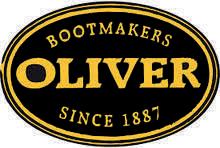
























There’s been a lot going on this month, with a great announcement for the electorate.
The variation to the Orana Designated Area Migration Agreement (DAMA) will see a geographical expansion that includes an additional 41 local government areas across inland NSW.
The DAMA allows employers who are unable to find suitably qualified Australians to supplement their workforce with overseas workers and is a gamechanger for the seat of Murray.
The occupation list will have an additional 64 professions added bring the total to 129 for those in desperate need of boosting their employee numbers.
The Minister for Work Health and Safety, Sophie Cotsis, Minister for Agriculture, Tara Moriarty and myself attended a Safework NSW round table to discuss the prevention of workplace fatalities and serious injuries in the agriculture sector.
56 attendees from most of the Eastern States brought their issues to the attention of the Ministers in an historic meeting.
My team were on the road interviewing Professor Peter Gell and Jan Beer as a follow up to my fact finding trip to the fake Lower Lakes in South Australia earlier this year.
The interviews will feature in a documentary I am making on water buybacks, the Murray Darling Basin Plan, the fake Lower Lakes and the Coorong in S.A.
The film will be screened in Parliament House at my upcoming water forum for Ministers in the first sitting week in May and will expose the lies S.A. are using to flush upstream productive irrigation water out to sea.

The intention is to continue my education of Members of Parliament on all things water and convince Minister for Water, Rose Jackson and Premier Chris Minns to refuse the Commonwealth’s reckless pursuit of water buybacks from irrigation communities.

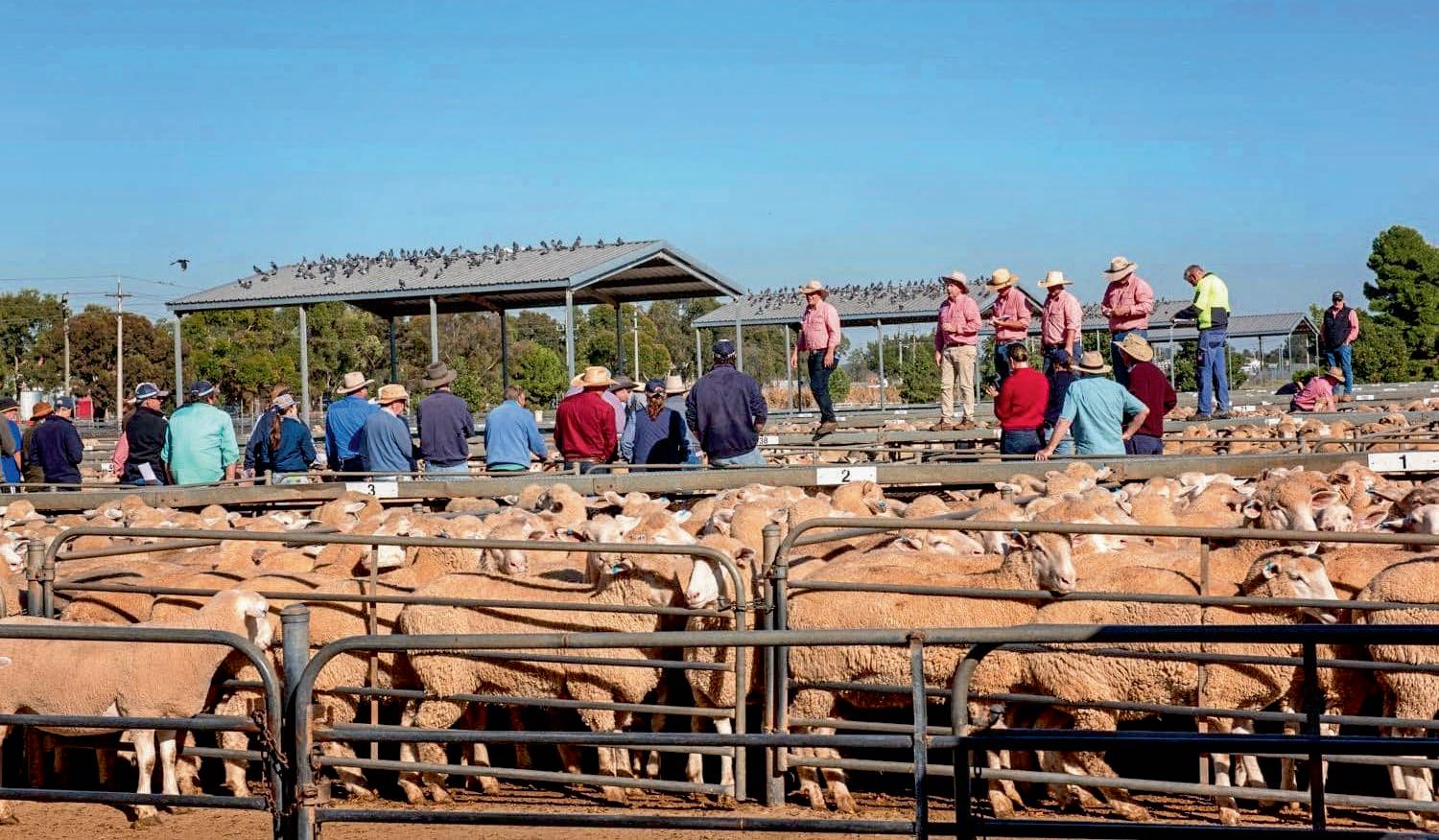

NSW Minister for Agriculture Regional NSW and Western NSW Tara Moriarty visited Griffith recently and chose Griffith Saleyards as the venue for a funding announcement.
Accompanied by Member for Murray Helen Dalton, the Minister announced an additional $1.4 million of funding from the NSW Government to support eligible saleyards to prepare for the mandatory roll out of Sheep and Goat electronic identification (eID).
“The NSW Government knows sheep and farmed goat saleyards across the State will need to complete some significant improvements to infrastructure to be ready for mandatory eID from 1 January 2025,” Minister Moriarty said.
“I’m pleased that a further rebate from our $38 million commitment to the sheep and goat industry can be utilised by saleyards to be prepared for this important milestone in NSW’s eID implementation plan.
“This additional program for eligible saleyards reflects how the government is continually collaborating with the industry to transition to mandatory eID in sheep and goats, we will continue to work closely with industry to achieve this supply chain transition.
Round 1 of the NSW Sheep and Goat eID Infrastructure Rebate saw 30 applications received, and $5 million approved for saleyards, out of the Saleyards funding stream. According to the NSW Government, this has supported the delivery of vital eID infrastructure that is right now being rolled out in saleyards across the state.
Key dates for mandatory eID for sheep and farmed goats in NSW:
30 June 2024
• Mandatory processor eID scanning and upload.

1 January 2025
• Mandatory eID for all sheep and farmed goats born from this date, prior to leaving property of birth.
• Mandatory eID scanning and upload by saleyards and depots.
• Mandatory eID property-to-property transfers.
1 January 2027
• Mandatory eID for all sheep and farmed goats prior to leaving any property.
Clean and renewable solar power and almond production go hand-in-hand in the Riverina.
The first of three bespoke renewable energy projects being pursued through a partnership between Australian Farming Services and AGL Energy was opened at Cadell Orchards near Yanga in mid-April.
Others are being constructed at Canally Orchards near Balranald and the Murray Downs Processing Plant, also run by AFS.
The projects represent how the industry, and how farming operations, are working towards their own netzero ambitions.
Transitioning to a lower carbon future involves the transformation of entire industries, and this project is how one of the largest almond producers in Australia is getting there.
At Cadell Orchards, AGL has constructed a 4.9MW tracking solar farm, 5.4MWh battery system, 7km of
new underground powerlines, an inverter, grid stability unit and microgrid controller and communications.
With enough renewable energy to power a small town, this new solar farm is the size of two MCGs and will help Cadell Orchards cut thousands of tonnes of CO² emissions each year.
The projects at Canally Orchards and the Murray Downs Processing Facility also aim to reduce reliance on diesel, harness renewable energy sources and provide energy resilience and reliability to their businesses.
AFS CEO David Armstrong said Cadell Orchards and Canally Orchards have been relying on 100 percent diesel generation to power its irrigation.
Th onsite microgrids will reduce their reliance on diesel by 85 percent, slashing the orchards’ combined
Scope 1 CO²-e emissions by 10,900 tonnes – the equivalent of taking 3,027 cars off the road.
“We manage more than 44,000 hectares and nearly 1.5 million trees in some of Australia’s most productive horticultural regions,” Mr Armstong said.
“With AGL’s support, we are transforming our farming operations to generate clean and renewable solar power, providing greater energy resilience for our remote area.
“The solar-powered microgrids at Cadell Orchards and Canally Orchards will deliver our almond farms an 85 percent reduction in diesel fuel, slashing our emissions and providing substantial cost savings each year.
“As one of the largest employers in the region, these renewable energy projects provide our businesses


with greater energy price certainty and better energy reliability so we can focus on producing Australiangrown almonds.”
AGL general manager commercial & industrial customers Ryan Warburton said the company was “thrilled” to have supported AFS in its goals to slash their emissions, reduce their costs and provide better energy resilience and reliability.
“The microgrid project at Cadell Orchards is just the beginning of our partnership with Australian Farming Services as we continue to transform their energy operations at Canally Orchards and Murray Downs Processing Facility to help lower costs and meet their future energy needs,” he said.
“We were delighted to host an event at Cadell Orchards to mark the completion of the microgrid and celebrate helping AFS achieve their sustainability goals.
“We were proud to also host representatives from other agribusinesses to showcase what joining the change can look like for our large business customers.
“Our partnership with AFS is testament to the great work we are doing with businesses in providing tailored energy solutions and supporting our customers to decarbonise the way they live, move and work.”
Thirty people across almond, pistachio and walnut industries attended the project completion celebration at Cadell Orchards in April.
The other two projects are continuing.
At Canally Orchards, AGL will construct a microgrid comprising a 6.5MWpDC solar array and a 5.1 MWh battery storage system.
As part of the project, AGL will build powerlines underground to connect the solar array with Canally’s irrigation pumping stations.
AGL will also explore using the excess solar energy to power agricultural vehicles and trucks transporting products to the Murray Downs Processing Facility.
In regards to the processing facility, AGL is conducting a feasibility study to design a flexible onsite,
“The solar-powered microgrids at Cadell Orchards and Canally Orchards will deliver our almond farms an 85 percent reduction in diesel fuel, slashing our emissions and providing substantial cost savings each year.”
DAVID ARMSTRONG
renewable microgrid to power the site from the lowest cost mix of available grid energy, solar energy and diesel.
Through the microgrid, it will look to provide grid stability services to the local network, ensuring reliable electricity in the Murray Downs region.
Results of the feasibility study will be complete by the end of the year.
ASF and AGL have been working together on the project since 2022, with ground broken at Cadell Orchards last year.














Technology… people either love it or hate it, the middle ground is tough to find and sometimes hard to stay there as well. However, the world we live in is becoming more and more technological and sometimes you might feel like you have to have the tech to keep up with the times.
Theagricultural industry is not immune to the use of tech either- from GPS systems in machinery, weigh scales for livestock or through to the more highend remote sensing systems and robotics in paddocks or automation of systems to open outlets on irrigation. Many farmers will have seen a steady progression along the line of technology over time.
When deciding whether to go down the tech investment path, there is always plenty of questions to consider. First and foremost, probably comes down to the initial cost outlay - is this going to cost a fortune?
From there, you might start asking a few other questions such as - how much use will you really get out of it? Is it going to be useful across multiple areas of your business? Do you need to invest in it from a farm safety perspective? How much time and labour is it going to save? Will there been suitable after-market assistance? Or, if you have really been putting it off for a while, there might be limited choice remaining and it may be coming down to a question of whether the current equipment is still serviceable or compatible with upgraded systems.
Like all big farm decisions, you will want to know if there is going to be the return on investment that makes this worthwhile. There are a few industry-specific Return-on-Investment calculators available online including;
- WaterCanProfit, this one can also be found through the Grains Research and Development Corporation website search
- FarmBot Monitoring solutions, found online at farmbot.com.au or by searching ‘FarmBot Savings Calculator’
- Optiweigh calculator, found online through PIRSA Ag Tech solutions, Optiweigh - MLA AgTech ROI Calculator, coming soon and will be available through the MLA website
The Australian Government currently has a rebate program available through the ‘On Farm Connectivity Program’ offering rebates on eligible equipment through approved suppliers. Further information about this program can be found at infrastructure.gov.au (google Department of Infrastructure or On Farm Connectivity Program).
In saying all that, there is no issue in continuing on with what works for you, on your farm; high tech or not. As long as it doesn’t become profitability limiting, inefficient or unsafe. If you like to keep things simple and have the time to get around and do the tasks without needing highly advanced technology that is fine. Alternatively, there may be access to a network of information that is applicable to your area that you can draw on to make some on farm decisions without having the technology right on your farm. This may include things like:
- FarmingForecaster- a network of soil moisture probes, weather information, pasture production and livestock performance across various regions of NSW. This enables farmers to utilise information from sites close to them or in similar climatic regions and soil types to make decisions on their farm.
- GoannaAg WAND Network (Weather And Networked Data)- available for farmers to register and have access to weather and remote sensed
information assisting in critical spraying decisions and reduce spray drift risk during operations.
If you are going to invest in technology for your farm, make sure you do your research and make the best informed decision you can at the time and have access to good after market support should you require it. Further information on AgTechnology can be found at NSW DPI website (Digital Agriculture – NSW Department of Primary Industries) and keep an eye out for further information and events through your Local Land Services office.
If you would like direct links to the ROI calculators, email Rebecca Stacey, SLSO Mixed Farming Deniliquin - rebecca.stacey@lls.nsw.gov.au

Are you seeing cattle that seem a bit off for a couple of days?
They might have signs such as:
• High fever
• Drooling with a stringy nasal discharge
• Watery eyes
• Not eating or drinking
• Shivering
• Lameness (often on day 2 of infection)
• Lying down and refusing to move
• Swelling around joints or jaw
• Sudden and severe drop in milk production or dairy cattle.
These are all symptoms that can be associated with a viral infection, Bovine Ephemeral Fever (BEF). Usually, the animals are only ill for a few days, which is why the condition is often referred to as Three Day Sickness.
While BEF is usually seen in the northeast of NSW and Queensland it can be found further south when
conditions are right. BEF is spread by biting insects, primarily mosquitoes, so outbreaks often occur after periods of heavy summer rain when mosquito numbers build up.
There have so far been six confirmed cases of BEF in the Murray region, around the Holbrook area.
While some stock may recover without treatment, animals affected with BEF may need supportive treatment such as anti-inflammatory medication and calcium injections. Bulls and heavily pregnant or high producing individuals are more likely to be more severely affected. Secondary infections such as pneumonia can also affect the recovery of affected animals.
Cattle develop a good immunity after being exposed to the virus. A vaccine is available for the disease, but it is not often used locally as the disease is not usually found here.
Further information can be found on the LLS website: https://www.lls.nsw.gov.au and search Three Day Sickness.
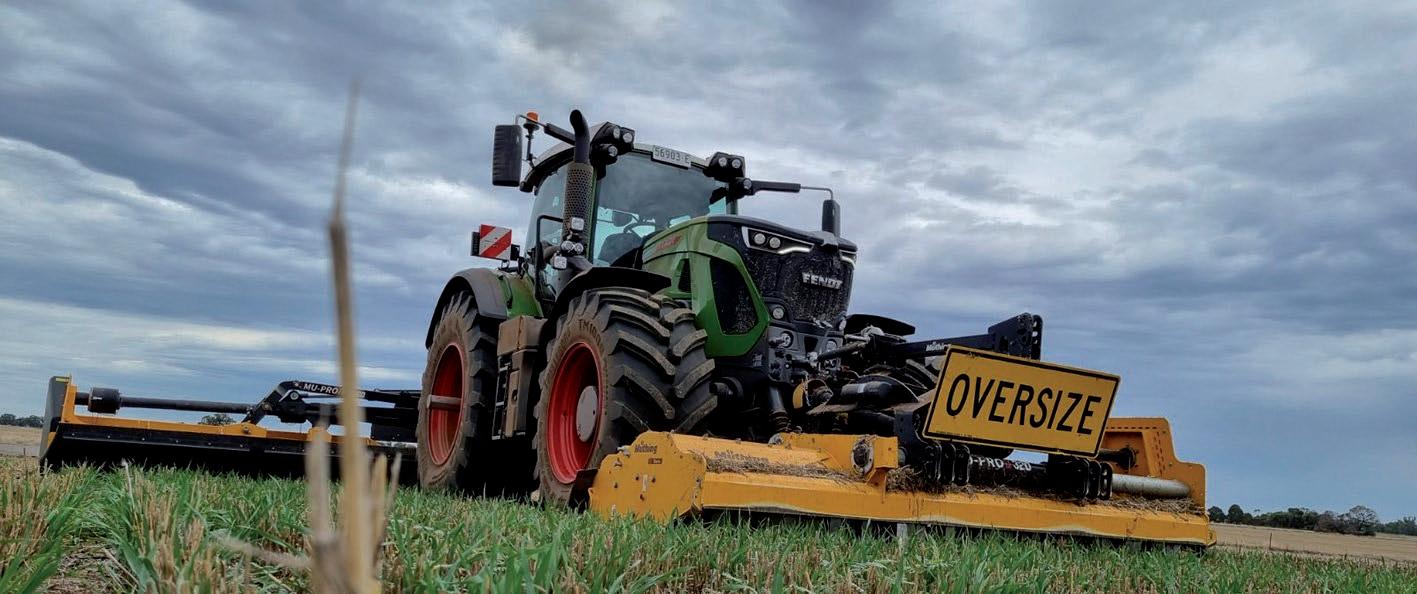



Soil acidity is one of the key constraints faced by farmers in southern NSW. pH is measured on a scale of 1-14, with anything below 7 considered acidic and anything above 7 considered alkaline.
Soil acidification occurs naturally through the weathering of soils; however, agricultural production increases the speed of acidification. Agricultural produce, like hay, grain and pasture are all alkaline products, therefore, when they’re removed from the paddock, they leave behind excess hydrogen ions, which increase soil acidity.

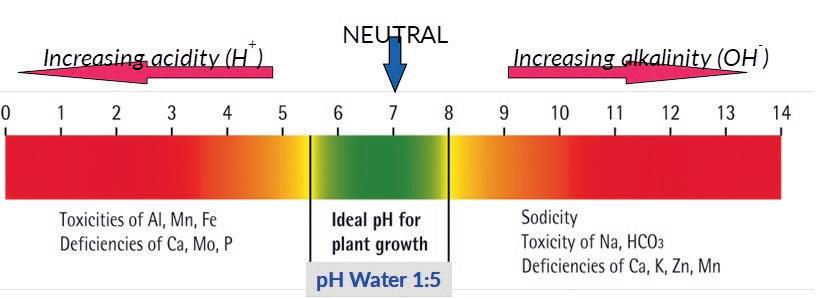
The more productive your paddock, the faster you are acidifying your soil. What does this mean for your farm?
Soil acidity isn’t irreversible, but it needs to be managed. You should be planning to lime at pH 5.2(CaCl2). At pH 4.5 (CaCl2) you will see plant effects, so you need to be actively applying lime.
Soil acidity can cause several constraints to your crop or pasture production, including:
- Reduced availability of key nutrients e.g. nitrogen, phosphorus and molybdenum.
- Reduced plant growth.
- Poor or ineffective nodulation of legumes.
- Aluminium toxicity – aluminium starts to become plant available at pH 4.7, stunting plant root growth and reducing their ability to access soil moisture and nutrients.
- Reduced fertiliser efficiency for pH sensitive nutrients e.g. in acid soils, phosphorus will be less available to plants, therefore requiring a higher rate to meet plant requirements.
- Less resilient plants are more vulnerable to pests and diseases.
It’s also important to remember, with pH, the lower it gets, the more lime you need to add to counteract it. Ie; if pH drops from 6 to 5 (CaCl2), there is 10 times more acid in the soil than at a pH of 6 and 100 times more acid than a pH of 7 (CaCl2). For this reason, it’s important to monitor and manage soil pH over time to prevent it moving to the subsoil.
- Soil test – you can’t manage what you don’t measure, so, soil testing each paddock in a regular rotation will identify any issues and allow for tracking change over time.
- Maintain pH above 5.2 (CaCl2) through the application of lime. Remember, the lower your pH gets, the more lime required to raise it.
- Lime won’t move in the soil, therefore, lime incorporation through strategic tillage is required to ameliorate the topsoil.
- Manage nitrogen fertiliser application to reduce leaching.
- Build organic matter in soil to increase its buffering capacity against acidity. For more information scan the QR code for the link to the NSW Department of Primary Industries Soil Acidity and Liming AgFact.
 Use of nitrogen fertilisers, leaching of nitrate and the build-up of organic matter can also contribute to soil acidification.
Use of nitrogen fertilisers, leaching of nitrate and the build-up of organic matter can also contribute to soil acidification.
The NSW Department of Primary Industries (NSW DPI) has released a new publication called Five tips for growing high-vigour canola seed to support producers using grower-retained seed for their canola establishment.
The publication outlines the key steps identified in a joint investment project between NSW DPI and Grains Research and Development Corporation (GRDC) to improve seed vigour and canola establishment for a more profitable and productive crop.
Colin McMaster, NSW DPI Research and Development Agronomist said how growers manage this year’s seed-crop could very well determine the success of next year’s establishment and financial return.
“Producing high-vigour canola seed-lots is achieved through a series of small, incremental gains including seed-crop agronomy and environment.
“The margin of error in establishing canola is much smaller than it used to be, as we are now sowing less seeds, it is costing growers more money, and we are placing those seeds in more hostile seedbeds due to earlier sowing.
“Canola seed has less energy reserves than largerseeded crops and, as a result, is more sensitive to poor
establishment across a range of seasonal conditions and agronomic management practices.
“Research and field surveys have identified that growers often only establish half of what is sown, and if the autumn break was less favourable its likely to be much less,” said Mr McMaster.
To reduce financial risk, some growers in the low to medium rainfall zone use open-pollinated (OP) canola varieties because the seed is cheap to buy, and it will grow true to the parent crop.
These traits allow growers to confidently retain seed which can increase flexibility and reduce financial risk within the farming system, for example if sowing conditions are marginal then seeding rates can be increased, or in the event of a failed establishment growers can spray out for an alternative option.
Other growers may be interested in retaining their own seed purely as a backup plan if there first choice seed supplies are delayed or to increase room in the crop budget for other critical crop inputs.

Autumn sowing conditions will determine how important seed quality/vigour is for a given year, with seed vigour (low or high) having negligeable benefit if seed can establish from shallow depth in ‘stress free’ conditions.
However, high-vigour seeds are often required when placing seed at deeper seeding depths due to rapid soil moisture dry-back in early sowing opportunities.
The guide also covers other key agronomic factors to improve canola establishment including reduced sowing speed, adequate fertiliser separation from the seed, reducing stubble loads and shallow/uniform seed placement.
The Five tips for growing high-vigour canola seed is available on the NSW DPI website at https://www. dpi.nsw.gov.au/agriculture/broadacre-crops/wintercrops/canola-and-safflower/five-tips-for-growinghigh-vigour-canola-seed

April marked the graduation of 142 Papua New Guinean farmers who attained a Certificate in Irrigated Rice Farming through SunRice Group subsidiary Trukai Industries’ Smart Farmer program.
The Smart Farmer program was established in 2022 in a five-year partnership between Trukai, the PNG University of Technology and the Pacific Adventist University.
It builds on decades of SunRice research and development in rice growing at ‘Old Coree’ in Jerilderie.
The graduation was the highlight of Trukai’s Rice Field Day held at Erap near Lae.
Trukai chair and SunRice grower director John Bradford said it showcased Trukai’s investment in rice farming and production, and a commitment to working closely with local farmers to enhance their skills in rice cultivation.
“The SunRice Group invested in PNG over 50 years ago and today our subsidiary Trukai Industries Limited boasts one of the leading consumer brands in the country, providing food security to PNG through our vitamin enriched rice products with around 70 per cent market share.
“Partnering with Trukai and the Smart Farmer Program has given us a wonderful opportunity to support the development of the domestic rice industry in PNG.
“We congratulate the graduates, the team at Trukai, and in particular rice development manager Aina Davis.
“Aina is passionate about the rice industry in PNG and has leveraged support from Rice Research Australia in terms of expertise, trial experience, research and access to internationally developed varieties that suit the climate of PNG.
“SunRice sees a strong future for the PNG rice industry and looks forward to an ongoing relationship with the Smart Farmer Program and the rice farmers it is developing.”
A rice harvest demonstration of 50 hectares was also conducted during Trukai’s Rice Field Day as part of the total 800 hectares of land allocated for commercial rice farming.
“This grain is intended to be integrated into Trukai Industries’ rice products to be distributed nationwide at the end of this year.
“Trukai Industries has one of the most extensive agricultural programs in PNG, investing millions of kina in rice research, science, technology and development for over 30 years.”










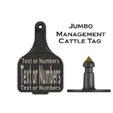












Ron Williams

The Brits thought the War would be a picnic. But they changed their mind after military disasters in Norway, Belgium and Tobruk. German subs were filling the Channel with British shipping, and the Frogs stopped hopping. Then the Hun parked their planes full-time over London, and Blitzed it. But, against all odds, the Poms survived. In Oz, the first Menzies Government rationed food, clothing, petrol, smokes and shirt tails. It introduced conscription for men, internment for Italian men, and stopped the use of pink icing on cakes. Photography was suspect, strikes were almost treasonable. Amid all this, Contemporary Art was blossoming, and doing its bit to destroy Australian culture.
BORN IN 1950?
WHAT ELSE HAPPENED?
Ron Williams
$21.99

Have a farm job you need a hand with? Connect with the Farm Army to get it done.
Aservice provided by the charity Rural Aid, the Farm Army is a job posting platform available online at www. farmarmy.com.au
Farmers post jobs they need help with, and workers and volunteers seek jobs.
Rural Aid knows it can be hard to find skilled people who are willing to travel and work in rural areas.
Many grey nomads, holiday makers, tradies and backpackers who do want to lend a hand express frustration at not knowing where to direct their skills.
Since the Farm Army was created, thousands of volunteers have been able to find meaningful work on Aussie farms. Volunteers have provided invaluable support to farmers and rural communities affected by drought, fire and flood.
If you are a farmer that needs assistance, you can list a job with the Farm Army. This will be shared online and with subscribers in weekly newsletters.
If you have skills and are interested in offering your time, a bit of sweat and are keen to meet some great rural people, check the jobs listed on the website.
$21.99
Hopefully, they will spark discussions between generations, and foster the asking and answering of questions that should not remain unanswered. In 1950, Dugan and Mears used a hacksaw to break out of gaol, they robbed banks, shot people and went back to gaol. The War finished five years ago, so it was time to stop petrol rationing. War criminals were hanging out at Nuremberg. Dancing pumps were tripping the light fantastic at The Plaza. Whaling in Australia was big; square dancing was bigger.
BORN IN 1960?
WHAT ELSE HAPPENED?
Ron Williams

Oz women were said to be drunks, Princess Margaret can now expect to have free photos taken, and professional tennis came via Jack Kramer to this fair land. The concept of male nurses was raised, Arthur Calwell’s dead hand fell on the Labour Party, William Dobell was said to tricked the Art World on April Fools Day, and two especially gory murders were committed in Maitland. And, can you believe it, a few men were admitted to hospitals during the labours of women. Has the new idea of the equality of the sexes gone too far?
BORN IN 1970?
WHAT ELSE HAPPENED?
Ron Williams
$21.99

President Nixon’s war in Vietnam, and now Cambodia, was getting unpopular in the USA and Oz. We decided to take our 8th Battalion home. Melbourne’s Westgate Bridge fell into the water and killed 35 workmen. The Queen, Prince Phillip, and two kids came to Oz. They liked it, so the Pope came later. Margaret Court, John Newcombe, Shane Gould, and Raylene Boyle all did well overseas, and made us think we were world-beaters. Nick Jagger starred in “Ned Kelly”. There were 13 million people and 180 million sheep in Oz. The Indian Pacific made its first trip across the nation.

$21.99
These great titles and more available instore. We post direct to you, contact us today to discuss getting your copies posted* *Postage and Handling fees apply.
FARMtalk welcomes community contributions from farmers, experts and professionals who make their living and life on the land. If you would like to contribute, there are several ways to do so.
• Get in touch and give us a tip of a great story idea.
• Contribute an article: If you are an expert in your field then contributing once off, or regularly, is a great way to get started in our FARMtalk magazine. Contact Zoe McMaugh at farmtalk@denipt.com.au or 03 5881 2322.
• Become an author: FARMtalk is open to occasional contributors who are experts in their field or authorities on a subject or area. Once you have contributed an article, and the editorial team have approved you, we can set you up with a regular column to contribute. We would love to hear from you. Contact Zoe McMaugh at farmtalk@denipt.com.au or 03 5881 2322.
• Have a fascinating farm in mind for us to showcase? Tell us! We would love to hear from you. Contact Zoe McMaugh at farmtalk@denipt.com.au or 03 5881 2322.
Phone 5881 2080. www.deni.com.au


